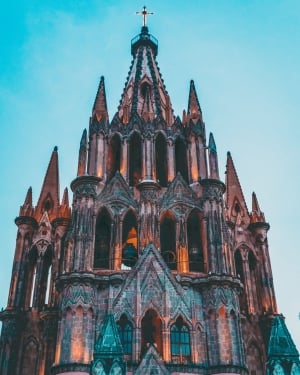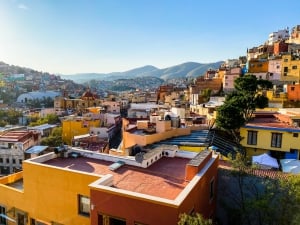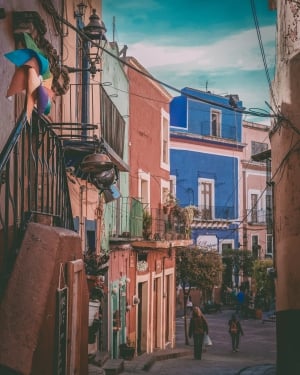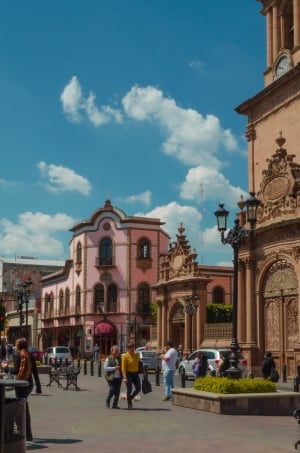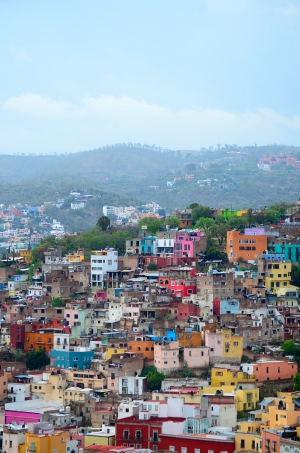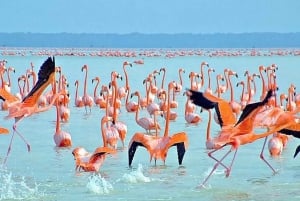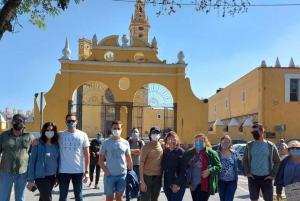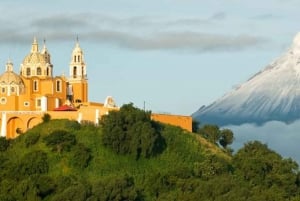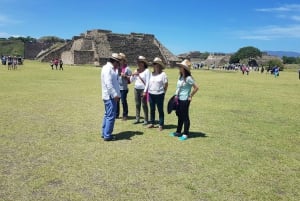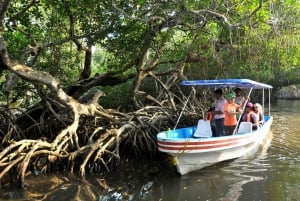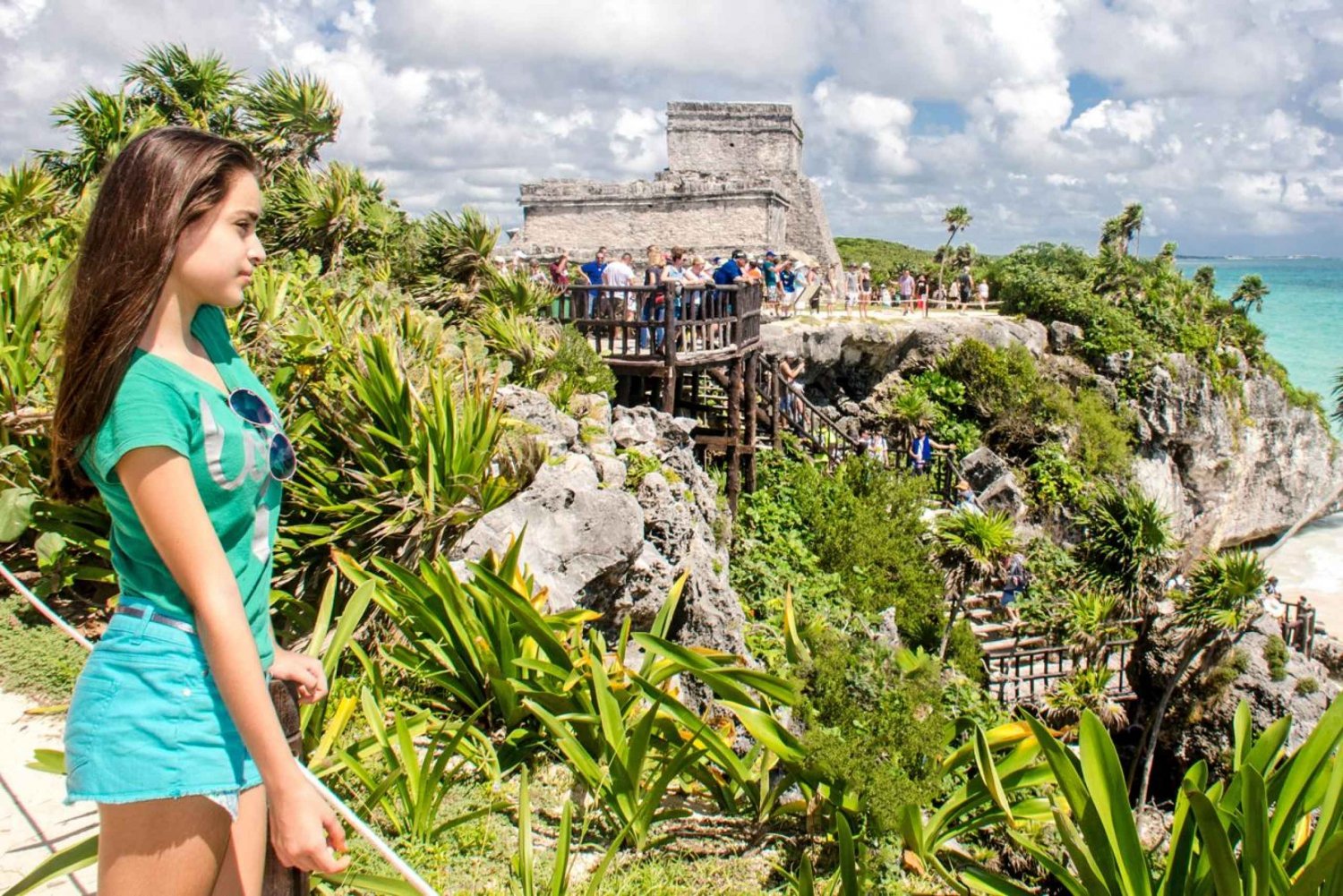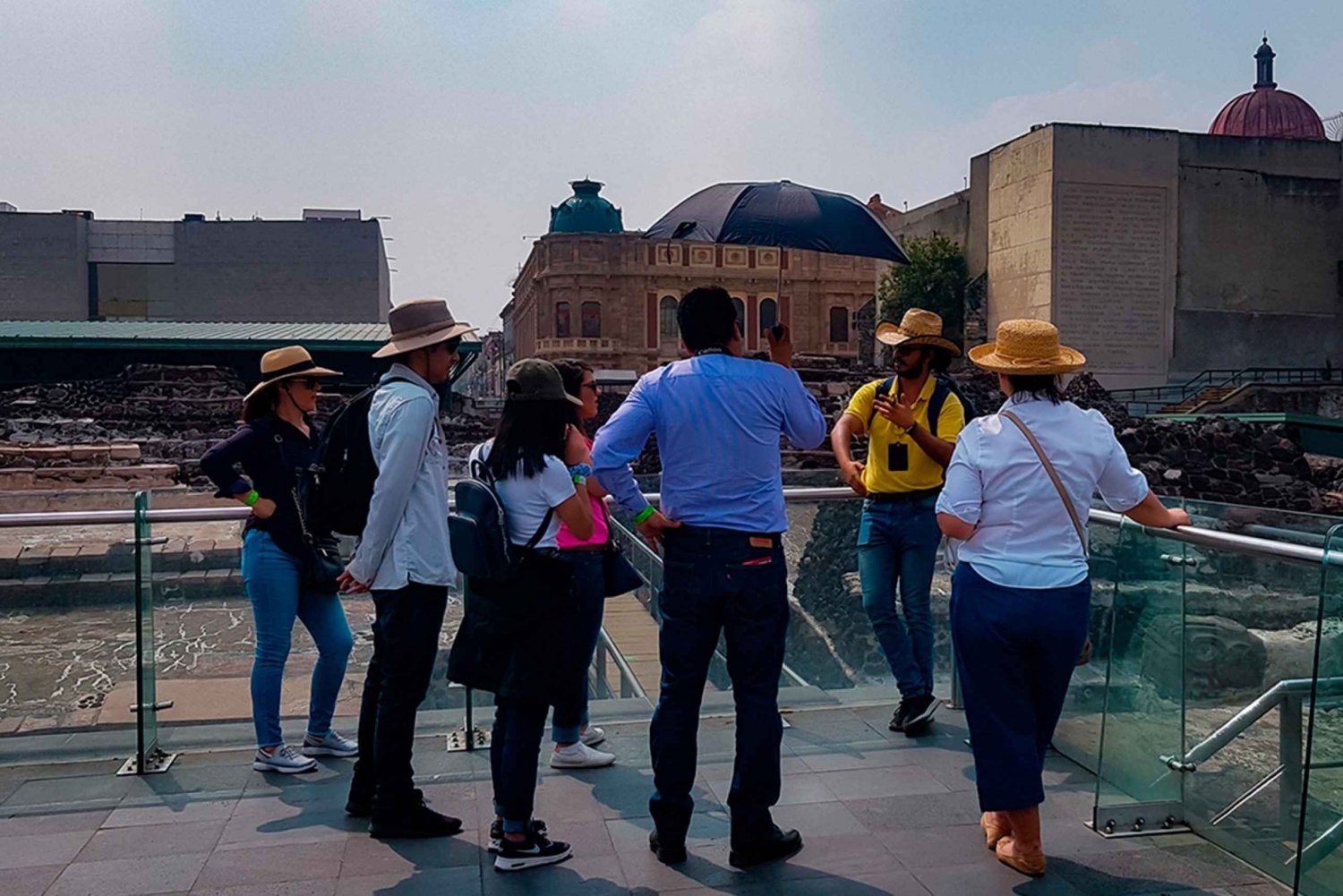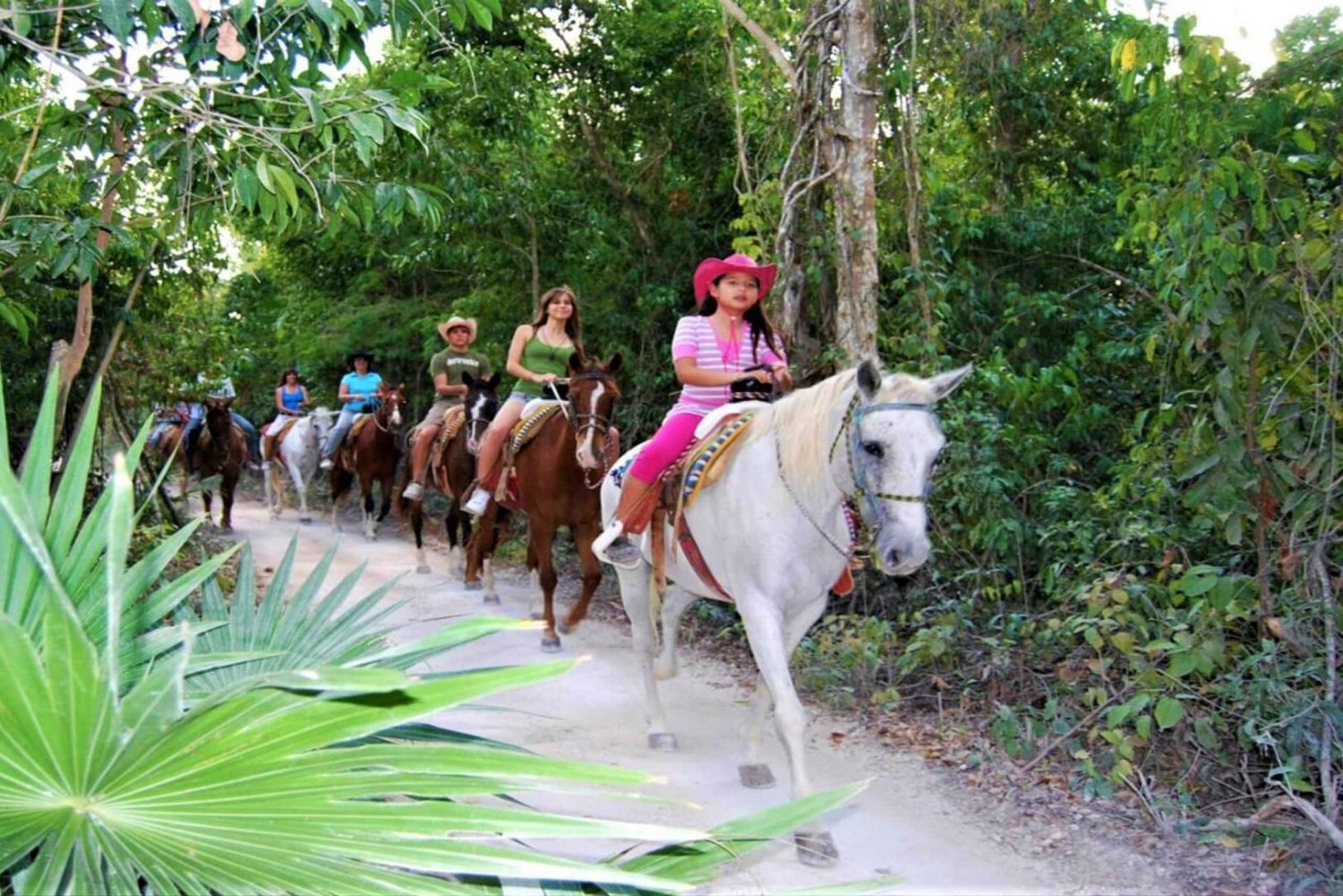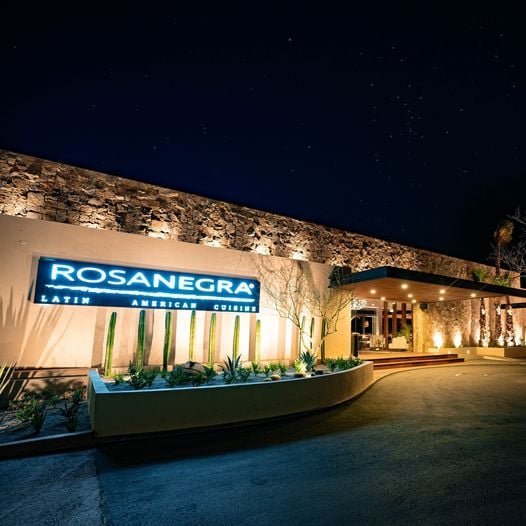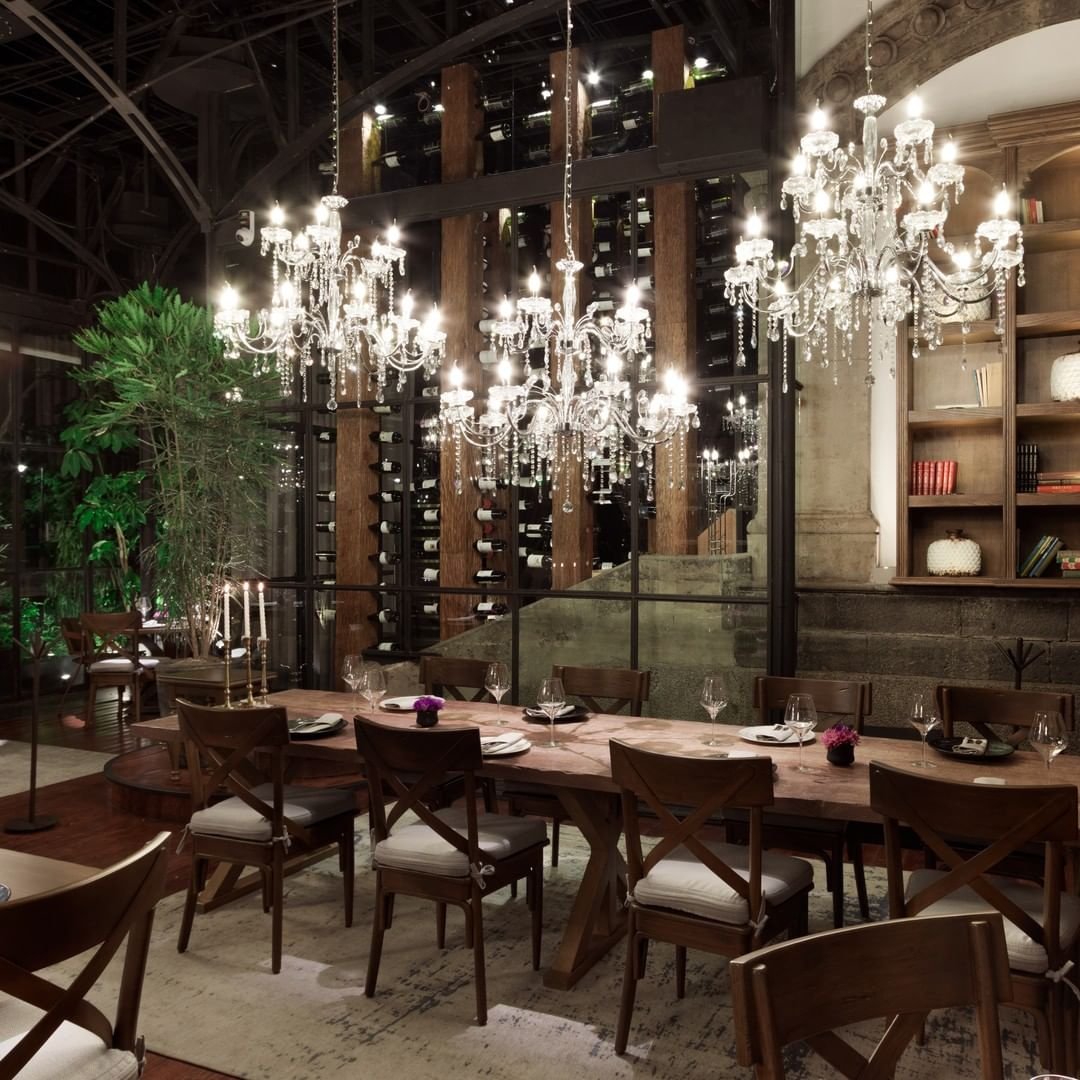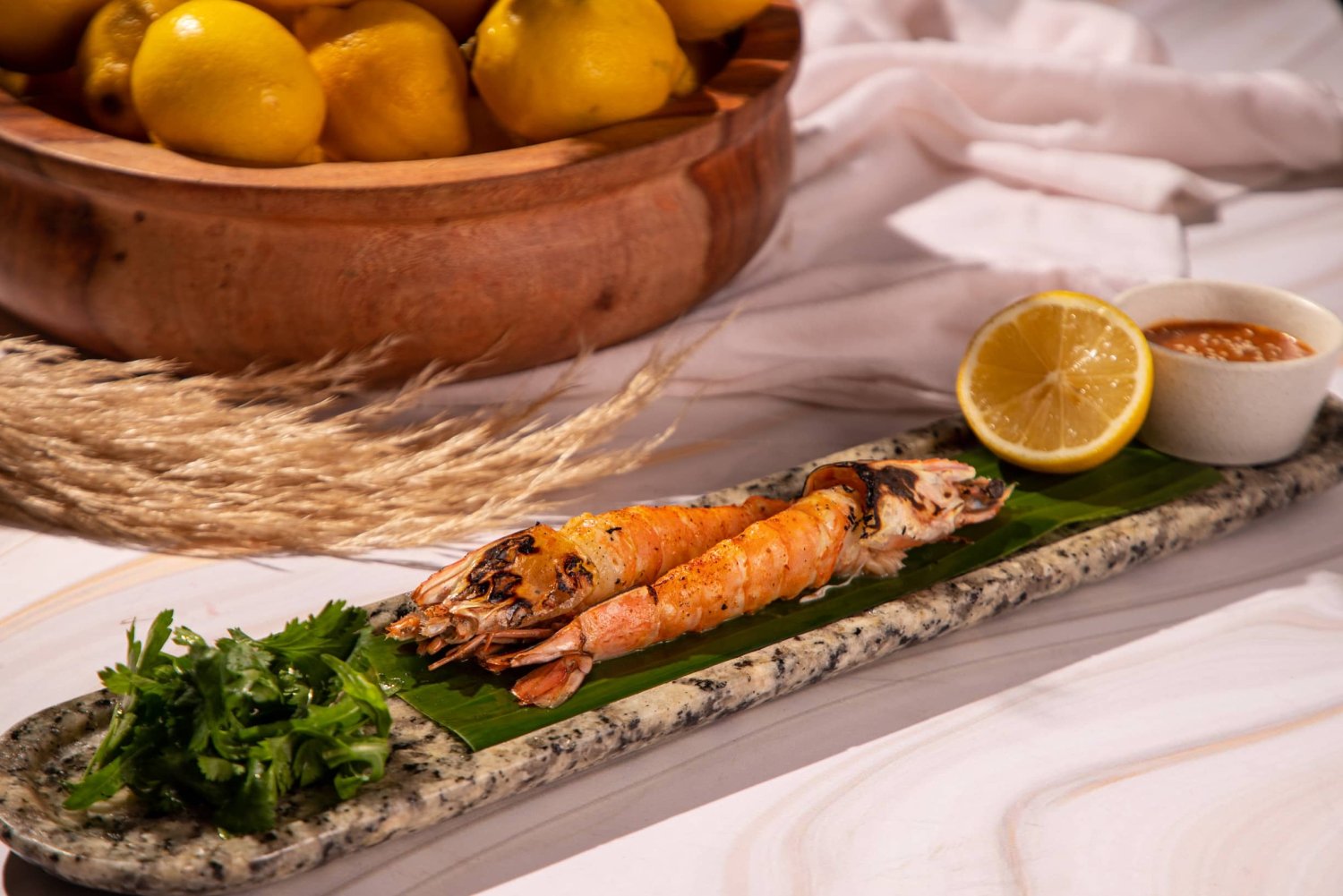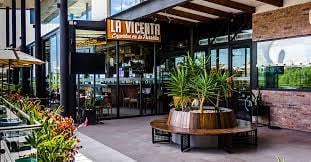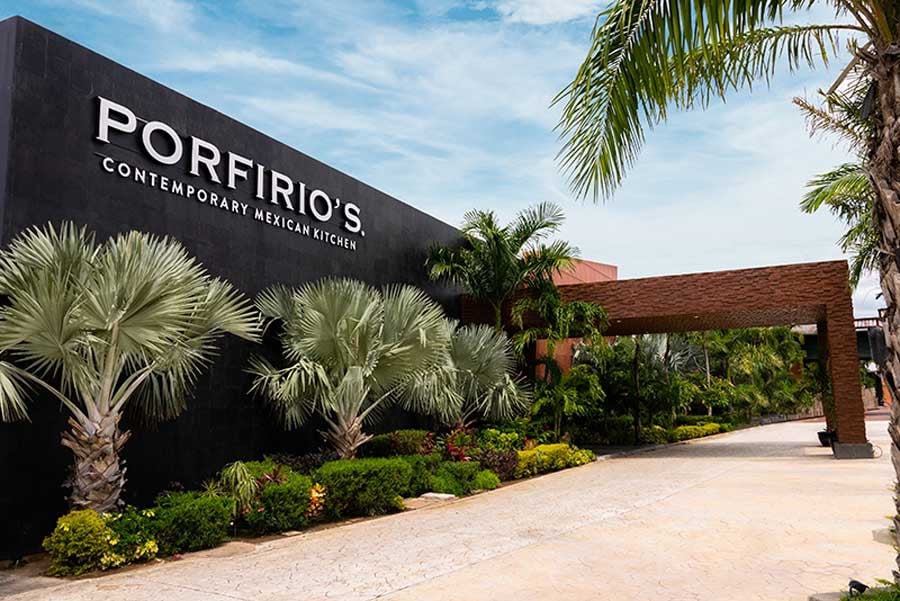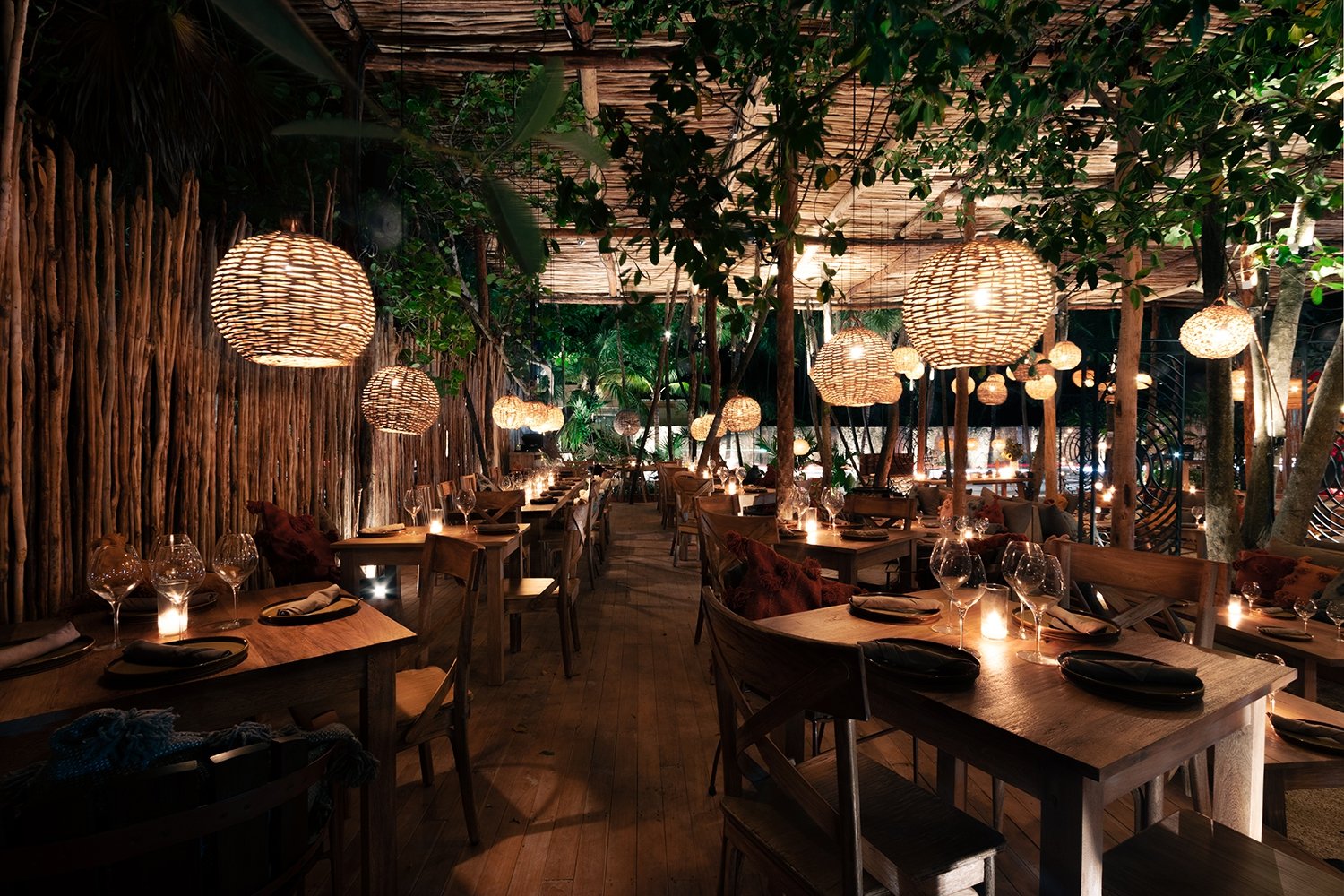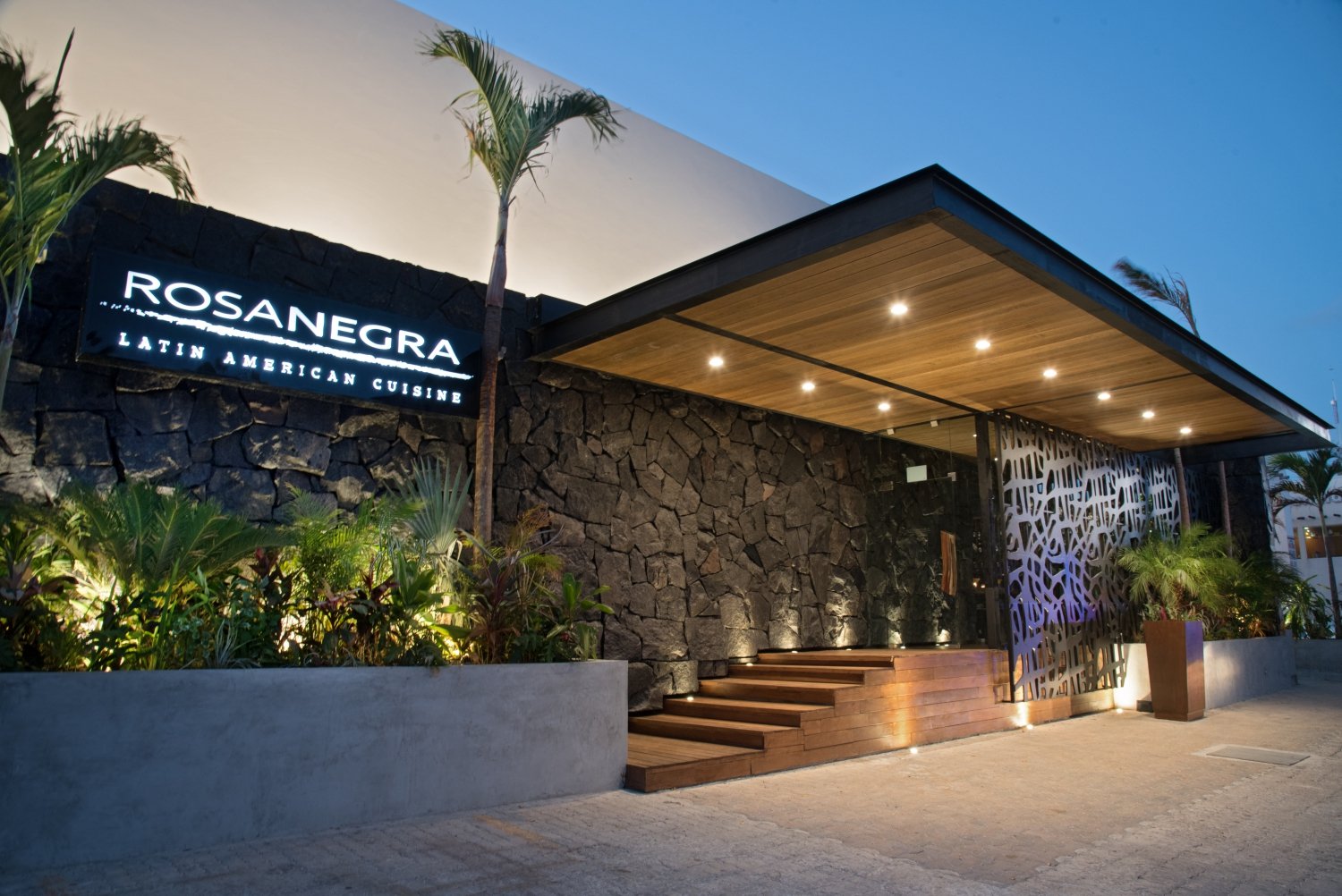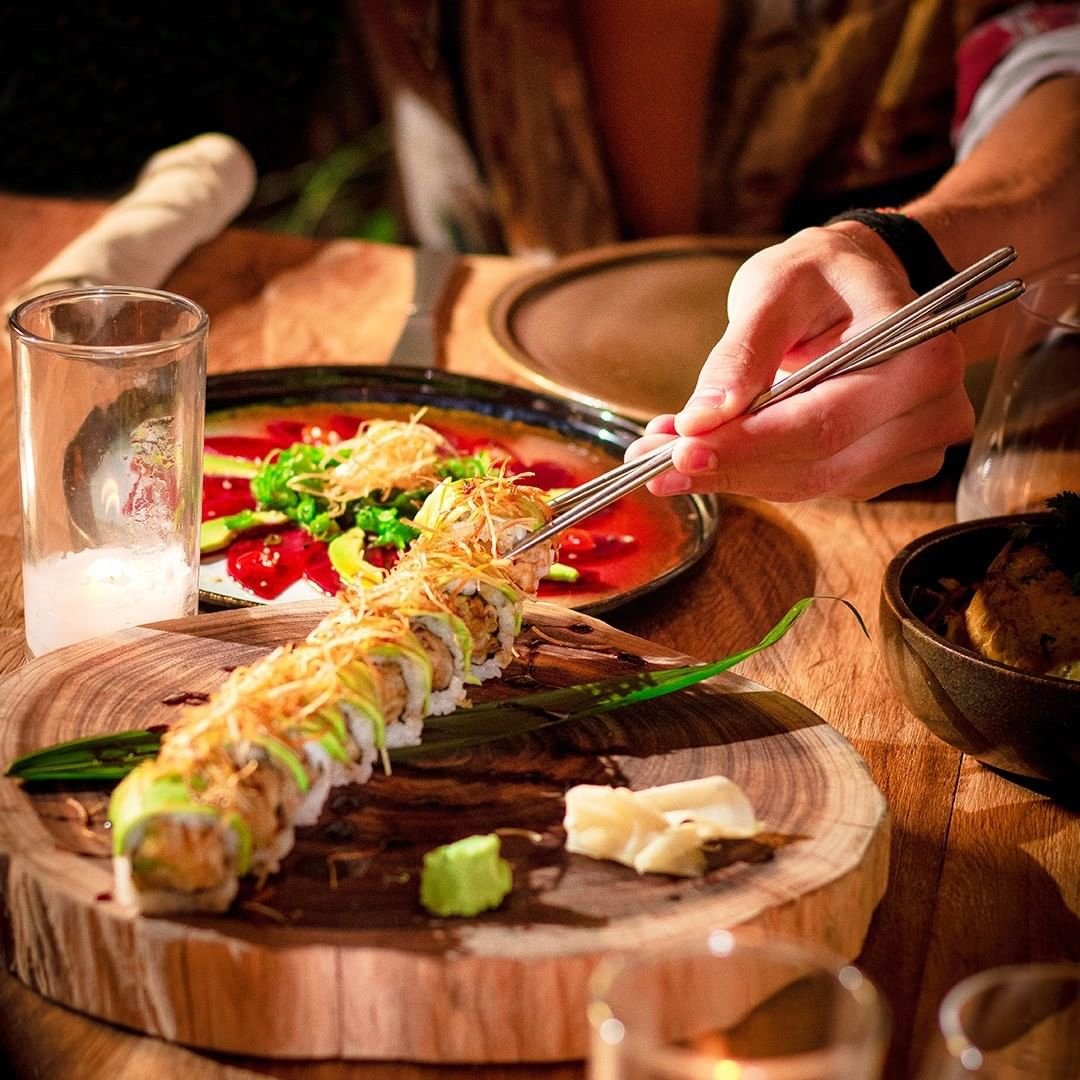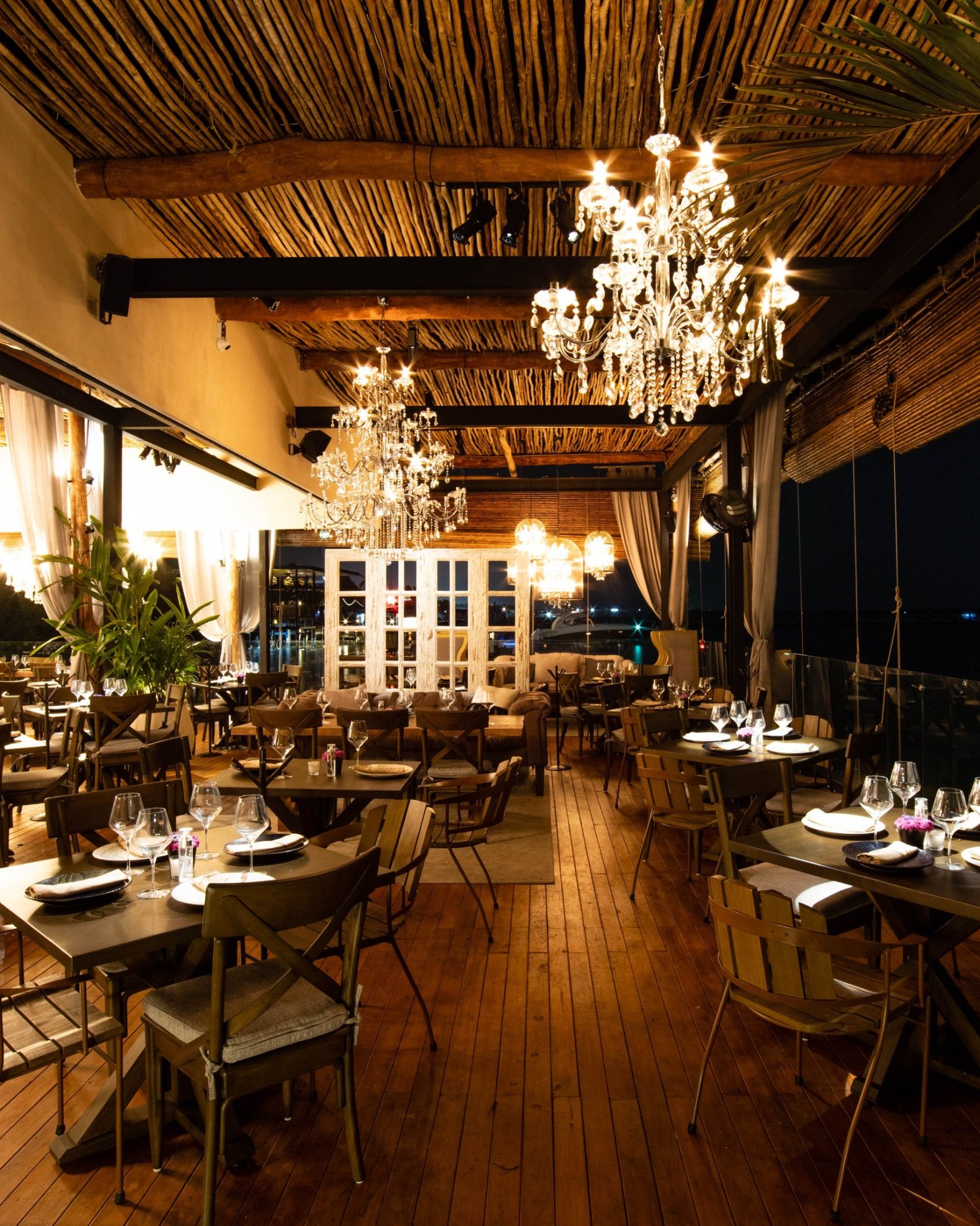Guanajuato
Best known for the annual International Cervantino Festival.
Guanajuato is a state located in central Mexico. It is bounded by the states of San Luis Potosí in the north and northeast, Querétaro in the east, Michoacán in the south, and Jalisco in the west. It sits on the Mesa Central at an average altitude of around 6,000 feet (1,800 meters). The city of Guanajuato is the capital of the province.
The first Spanish settlement in Guanajuato was San Miguel de Allende in 1542. It was an important silver mining field during colonial times. In 1810, Miguel Hidalgo y Costilla began the Mexican War of Independence in the village of Dolores (now Dolores Hidalgo) and the same year took over Guanajuato. In 1824, the district became a state.
The Lerma River and two tributaries, Turbio and Laja, water the fertile plains of the south. The state is heavily populated, with approximately two-thirds of its population living in urban areas. Mining is the largest industrial activity. Services, which account for around half of the population and manufacturing, are concentrated in León, the largest city in the province, as well as in Salamanca, Irapuato, Celaya, and Guanajuato.
Manufactures include cotton and woolen textiles, clothing, alcoholic drinks, refined petroleum goods, metal products, candies, and processed foods. Guanajuato is one of the country's top producers of pork. Its main crops are maize, alfalfa, potatoes, chilies, and wheat. Railroads and highways traverse the state.
Guanajuato has three distinct zones, the Sierra Madre Oriental Mountain Range, the Mexican Plateau, and the Trans-Mexican Volcanic Belt. The mountains are foresty hills, while the valleys contain both desert plants and grazing land. Bajio is the best-recognized geographical region of the state; the Lerma River flows through the flatlands of the Bajio, along with its tributaries. This area is renowned for its orchards where apples, limes, and guava grow. While Guanajuato has significant surface waters, there are also many subterranean aquifers in many of its regions.
While mining and farming have taken their toll on the property, 21 sites are now secured. The varied habitats of the state are home to a wide variety of species, including armadillo, rattlesnake, puma, and deer.
Cultural institutions of note are the capital city of the University of Guanajuato; De La Salle University Bajío, with many satellite campuses spread across the state; and the regional campus of the Ibero-American University. In 1988, the ancient center of Guanajuato and the nearby colonial-era mines, including the 1,970-foot (600-meter) pit known as the Boca del Infierno ("Mouth of Hell"), were jointly declared a UNESCO World Heritage Site.
The state is best known for the annual International Cervantino Festival, which takes place in the city of Guanajuato and several other associated venues in the state. The festival presents activities such as opera, theatre performances, film exhibits, art galleries, academic conferences and seminars, concerts, and dance recitals.
Tourism routes:
-
The Ruta de la Independencia or Independence Route is made up of ten municipalities from which the rebel army under Miguel Hidalgo passed. They include San Miguel de Allende, Dolores Hidalgo, Guanajuato, León, Irapuato, Pénjamo, Salamanca, Celaya, Salvatierra and Acámbaro.
-
The Ruta de Aventura combines ghost towns and abandoned mines with recreational areas for climbing, mountain biking and ATV, as well as other adventure sports such as paragliding.
-
The Ruta de los Conventos or Monastery Route is concentrated in the south of the province, where a number of major religious structures were established for evangelization in the early colonial era.
-
The Ruta Artesanal (Handcrafts Route) links a variety of municipalities specializing in one or more handcrafted items, including food. This include Acámbaro, known for its bread, Coroneo for its wool and Tarancuaro for ceramics.
-
The state also has a significant number of amusement parks and hot springs converted into water parks. Any of them are El Trébol, Villa Gasco and Comanjilla near León, Caldera Abasolo near Irapuato and Abasolo, and Los Arcos, and Agua Caliente near Celaya.
Tamales, carnitas, and pozole are the cuisine of Guanajuato. Popular for its lush range of spices, customs, and even blends. Since the time of the Franciscans, wheat has been the main food staple here. Many varieties of vegetables and fruit grown locally find their way into a number of dishes.
Some of the most common dishes in Guanajuato include:
-
Miners' Enchiladas (ranchero cheese, chicken, and chili peppers).
-
Chile Relleno (a stuffed poblano pepper).
-
Barbecue of lamb and goat.
The state is also renowned for its fruit-based candies, tasty sorbets, and cream and sugar pastry.




